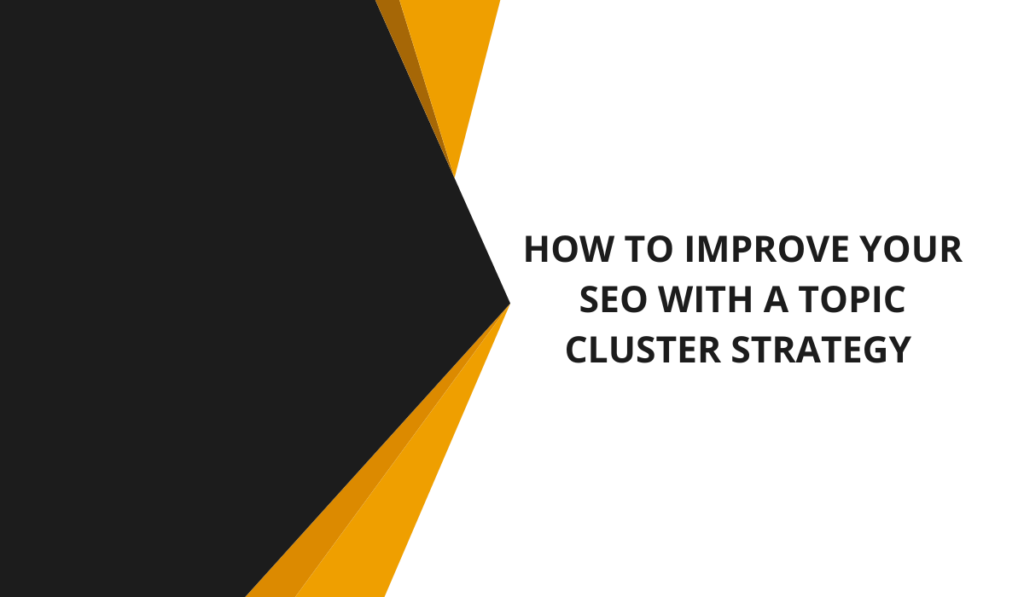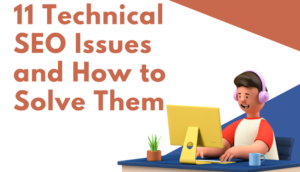Are you tired of playing hide-and-seek with your website on SERPs? Do you want to climb to the top of the rankings and bask in the glory of high organic traffic?
Well, it’s time to ditch the traditional SEO methods and embrace the wild and wonderful world of topic clusters!
Topic clusters are not your average SEO strategy.
They are like a superhero squad where each member has their own unique power, but they come together to form an unbeatable force. In this case, each member is a subtopic, and the force is the primary topic or pillar content.
With this approach, you’ll not only improve your search rankings but also provide your audience with the answers they’re yearning for.
Creating a topic cluster strategy is like embarking on a thrilling adventure. You’ll need to put on your keyword research hat and venture into uncharted territory to identify related subtopics. You’ll then organize them into clusters around the primary topic and create content that links back to the pillar content.
But the journey doesn’t end there. To be a true content hero, you must constantly measure and adjust your strategy based on data. From time to time, you will need to put on your data analyst hat and use metrics to track the success of your topic cluster strategy. With the right tools and mindset, you’ll be able to refine your strategy and watch your website soar to new heights.
So, are you ready to join the topic cluster revolution and become an SEO superhero? Hold on tight, because this adventure is going to be a wild ride!
What is Topic Cluster
Topic clusters are groups of related content constructed around central content that collectively covers a broad subject area. Content in a topic cluster revolves around a similar subject and is interlinked in an organized structure.
Topic clusters ensure each new content is connected to a primary or pillar content. They often stem from high-volume search keywords and similar terms that rank within the same category.
For example, if your topic is “summer sunscreen,” you will create different central content that introduces your brand or product and follow it up with content that fits into that category. Doing this lets you organize and structure your content to show search engines and your visitors how versed you are on the subject.
This strategy will eventually help you establish yourself and your business as an authority in your niche. You will be able to target all the keywords and long tail keywords you are after. The beauty of topic clusters is that the entire cluster ranking will improve if one blog post ranks well.
Going back to the example above, if we use “summer sunscreen” as our primary topic, we can create various blog posts that tie to the main topic.
Here’s how that could be:
Components of Cluster Topics
A topic cluster can be split into three categories. You have the pillar content, the cluster content, and the bridge between them.
Pillar content: This is the foundation or core of a group of related content pieces. It is comprehensive and typically long-form. Typically, a content pillar will cover or touch on every aspect of the main while leaving ample room to expound on them in a different post. A pillar content gives an overview of the theme or subject at hand, and content clusters sponge from it.
Content Cluster: This content is directly connected and relevant to pillar content. Typically, they target specific keywords associated with the central topic and delve deeper. Cluster content strategically links back and forth to the central topic’s pillar page. Content cluster support and enhance the central topic’s authority and expertise.
Hyperlinks: These are interlinks that connect cluster content to pillar pages. They make it easier for the crawlers to understand the content hierarchy and for users to navigate your website, i.e., go from one content piece to another.
The Benefits of Topic Clusters
When digital users seek information about products, services, or content, they typically use search engines as their primary source. Your website’s position on the SERPs can be crucial in driving traffic, generating revenue, and increasing conversions.
The way people search and how google ranks content has significantly changed. Users are more specific with their queries.
You need to show Google that your web pages are relevant and authoritative compared to your competitors to rank. That’s why topic clusters are so significant for driving organic traffic to your website, as they don’t just rely on proper keyword usage. That is no longer enough.
Google today searches for synonyms, subtopics, and even answers to frequently asked questions about your industry when a user is looking for information about it. Topic clusters help you build this kind of in-depth content with no gaps.
Other ways topic cluster will enhance your SEO include:
- Improved user engagement by providing better reading and browsing experience.
- Increase in website traffic – since topic clusters tend to improve search rankings for the content group, it leads to increased website traffic.
- Content cluster improves your keyword research and ensures you avoid overlaps and keyword cannibalization that can hurt your SEO.
How to Improve Your SEO with the Topic Cluster Model
Now that you understand topic clusters and how they can help you improve your SEO, it’s time to dive deeper into how to make them work for you. Building a topic cluster is no small feat; it requires a strategic approach to merge your content effectively.
The first step is setting clear goals. Knowing what you want to achieve will guide your content creation process and ensure your efforts align with your desired outcome. Understanding your audience and their pain points is also crucial. Creating content that resonates with them is difficult without deeply understanding your target audience.
Next, you need a strategy that addresses those pain points using interconnected content. This means creating content that supports your pillar page and connects with other content within the topic cluster. Finally, you must structure your content to take the reader through your buyer funnel effectively.
Here is how you can do that:
Understand Search Intent
To optimize your SEO strategy effectively, you must prioritize your users’ needs by understanding their search intent. This means identifying the purpose behind their specific search query. Knowing your users’ search intent will help you create relevant topic clusters, build subtopics, and develop your Pillar pages.
To get started, audit your ranking keywords using tools like SEMrush to discover how users find you and what they are searching for. Consider at what stage they are in their buyer journey when they search. Then, repeat this process by analyzing your competitors to identify keyword gaps and develop keyword targets.
Finally, filter the SERP data to uncover what else people are searching for. This will help you optimize your content marketing funnel by considering the moments leading up to the search and the following questions.
Once you have all this info, move to the next stage, analyzing the collected data to discover your user’s search intent. This will guide you in how you will build cluster foundations and master the keyword list.
Create a Master Keyword List
When creating a topic cluster, you need to structure content in a way that doesn’t through off a reader. Since you know your users’ intent, a master keyword list will help you create a path that you can later use to direct users. You don’t want to be in a position where your reader hits a roadblock in the middle of the journey or where you have to force him to skip a step.
Think of it this way: You have published and linked several articles together. A user comes across your “awareness” content, and instead of leading him through the sales funnel properly, you send him directly to the purchase stage. This is because you have a content gap.
A content gap can be detrimental in two ways:
- You will struggle to keep a user in your sales funnel – Without adequate content to provide value and guide them through the customer journey, users are likelier to abandon your site and seek out competitors.
- You’ll miss out on meeting the user at a specific stage – Having awareness, and transactional content is essential, but without consideration-stage content, you risk losing valuable customers. This can ultimately hurt your authority.
A keyword master plan fixes this by ensuring you build a cluster foundation that has no keyword gap.
This will ensure that whenever a user comes across your content using your topic clusters, you can send them back or to the next possible stage effectively. You will be able to meet your user at every stage, no matter what their search intent is.
Create Content and Cluster Pages
Once you have a clear idea of what your customer wants and how to reach them by targeting the keywords they are searching for, it’s time to create great content. As such, you need to start with your pillar page. Every theme or cluster topic should have a Pillar.
Your Pillar content should be optimized to holistically cover the topic and contain internal links to all your cluster pages. Additionally, you should keep them evergreen and use the relevant call to action to guide readers to specific cluster pages and push them to the right content at the right moment.
Now that you have your pillar page, you must create cluster pages, exhaust all possible angles, and provide your audience with relevant content. This means building all the relevant awareness, consideration, and conversion articles. But this should be done in a structured way to ensure both crawlers and users can understand how your content is interconnected.
Here’s how you do that:
Step 1: Build the pillar content
Step 2: Build relevant content that stems from and supports the primary page. The content should be related to what is contained in the pillar content. If you already have enough content on your site, you can perform a content audit to know how to tie all the related content together.
Step 3: Create internal links connecting the pillar page with relevant content. You should constantly optimize the internal links as you add content.
Step 4: Connect the pages and organize them in a way that guides the user’s journey from the moment they stumble on your content to the conversion stage and beyond.
Step 5: Create spinoff themes and pillar pages along the way – Some of your cluster content might develop into more significant projects as you introduce new products/services or the needs of your users change. Doing this can address the full spectrum of your customers’ questions.
Keep Track of Metrics and Analytics
Any SEO strategy doesn’t end with execution. You need to constantly come back to your content and improve it if you must compete in SERPs. You can only achieve this by measuring performance by tracking and analyzing different metrics and KPIs related to your goals.
Some metrics to track include:
- Page views
- Time on page
- Bounce rate
- Conversion rate
- SERP position
Tracking your cluster performance has many benefits, including:
- You’ll understand your user’s journey better and be able to structure and improve your topic clusters
- You’ll identify any content gaps that might be hurting your authority
- You’ll track the stats to know which content you must repurpose, update, or remove.
- You will know which cluster page to create a spinoff from depending on their performance
Once you can measure and track these SEO results, you can adjust accordingly. Finally, remember that results don’t come overnight. You will need to be patient, measure the progress, and make necessary improvements.
Topic Cluster Model Will Enhance Your Content Strategy
A topic cluster approach is most beneficial for those who regularly post new blogs or currently maintain a significant content archive since it allows you to improve current and future content. Since this requires developing detailed content strategies, a topic cluster can enhance that and make your work easier. You will know how and where to fit every piece of content to get the most value.
One of the most significant benefits of using topic clusters in your content strategy is that your content no longer competes with itself. Instead, it is working together to create a network of related content that is interconnected and supports each other. This approach allows you to build a deep pool of knowledge around a particular topic, making your content more valuable and comprehensive for your audience.
By marrying your content and topic cluster strategy, you can plan numerous pieces of content on a topic while ensuring that each piece is well-crafted and adds value to your audience. This approach maximizes the value you bring to your audience and ensures that you improve your SEO by creating a comprehensive resource that is easy for search engines to crawl and index.





